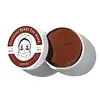What's inside
What's inside
 Key Ingredients
Key Ingredients

 Benefits
Benefits

 Concerns
Concerns

 Ingredients Side-by-side
Ingredients Side-by-side

Water
Skin ConditioningNiacinamide
SmoothingGlycerin
HumectantPEG/PPG/Polybutylene Glycol-8/5/3 Glycerin
HumectantButylene Glycol
HumectantAscorbyl Glucoside
AntioxidantMethyl Gluceth-20
HumectantCarbomer
Emulsion StabilisingGlycolic Acid
BufferingTriethanolamine
BufferingSodium Hyaluronate
HumectantPhenoxyethanol
PreservativeCaprylyl Glycol
EmollientCitrus Limon Fruit Extract
MaskingBiosaccharide Gum-1
HumectantPolysorbate 20
EmulsifyingWater
Skin ConditioningGlycerin
HumectantCarrageenan
Butylene Glycol
HumectantPanax Ginseng Root Extract
EmollientPanax Ginseng Berry Extract
Skin ConditioningPaeonia Lactiflora Root Extract
Skin ConditioningPunica Granatum Fruit Extract
AntioxidantRubus Idaeus Fruit Extract
AstringentCornus Officinalis Fruit Extract
Skin ConditioningPrunus Serotina Fruit Extract
MaskingVaccinium Macrocarpon Fruit Extract
AstringentBrassica Napus Extract
Skin ConditioningFreesia Refracta Extract
Skin ConditioningForsythia Suspensa Fruit Extract
AntioxidantOenothera Biennis Flower Extract
AstringentCalendula Officinalis Flower Extract
MaskingLavandula Angustifolia Extract
Skin ConditioningMonarda Didyma Leaf Extract
Skin ConditioningMentha Piperita Leaf Extract
Skin ConditioningChamomilla Recutita Flower Extract
MaskingRosmarinus Officinalis Leaf Extract
AntimicrobialSodium Hyaluronate
HumectantCeratonia Siliqua Gum
EmollientSucrose
HumectantPEG-60 Hydrogenated Castor Oil
EmulsifyingCyamopsis Tetragonoloba Gum
Emulsion StabilisingPotassium Chloride
Calcium Chloride
AstringentAllantoin
Skin ConditioningBetaine
HumectantCellulose Gum
Emulsion StabilisingChondrus Crispus Powder
AbrasiveRicinus Communis Seed Oil
MaskingPropanediol
SolventPentylene Glycol
Skin ConditioningCocos Nucifera Fruit Extract
EmollientPinus Sylvestris Leaf Extract
TonicCI 77491
Cosmetic ColorantCalcium Lactate
AstringentSynthetic Fluorphlogopite
CI 77891
Cosmetic ColorantDisodium EDTA
Dipotassium Glycyrrhizate
HumectantTitanium/Titanium Dioxide
Cosmetic ColorantCI 77492
Cosmetic ColorantParfum
MaskingEthyl Hexanediol
Solvent1,2-Hexanediol
Skin ConditioningHexylene Glycol
EmulsifyingHydroxyacetophenone
AntioxidantChlorphenesin
AntimicrobialWater, Glycerin, Carrageenan, Butylene Glycol, Panax Ginseng Root Extract, Panax Ginseng Berry Extract, Paeonia Lactiflora Root Extract, Punica Granatum Fruit Extract, Rubus Idaeus Fruit Extract, Cornus Officinalis Fruit Extract, Prunus Serotina Fruit Extract, Vaccinium Macrocarpon Fruit Extract, Brassica Napus Extract, Freesia Refracta Extract, Forsythia Suspensa Fruit Extract, Oenothera Biennis Flower Extract, Calendula Officinalis Flower Extract, Lavandula Angustifolia Extract, Monarda Didyma Leaf Extract, Mentha Piperita Leaf Extract, Chamomilla Recutita Flower Extract, Rosmarinus Officinalis Leaf Extract, Sodium Hyaluronate, Ceratonia Siliqua Gum, Sucrose, PEG-60 Hydrogenated Castor Oil, Cyamopsis Tetragonoloba Gum, Potassium Chloride, Calcium Chloride, Allantoin, Betaine, Cellulose Gum, Chondrus Crispus Powder, Ricinus Communis Seed Oil, Propanediol, Pentylene Glycol, Cocos Nucifera Fruit Extract, Pinus Sylvestris Leaf Extract, CI 77491, Calcium Lactate, Synthetic Fluorphlogopite, CI 77891, Disodium EDTA, Dipotassium Glycyrrhizate, Titanium/Titanium Dioxide, CI 77492, Parfum, Ethyl Hexanediol, 1,2-Hexanediol, Hexylene Glycol, Hydroxyacetophenone, Chlorphenesin
Ingredients Explained
These ingredients are found in both products.
Ingredients higher up in an ingredient list are typically present in a larger amount.
Butylene Glycol (or BG) is used within cosmetic products for a few different reasons:
Overall, Butylene Glycol is a safe and well-rounded ingredient that works well with other ingredients.
Though this ingredient works well with most skin types, some people with sensitive skin may experience a reaction such as allergic rashes, closed comedones, or itchiness.
Learn more about Butylene GlycolGlycerin is already naturally found in your skin. It helps moisturize and protect your skin.
A study from 2016 found glycerin to be more effective as a humectant than AHAs and hyaluronic acid.
As a humectant, it helps the skin stay hydrated by pulling moisture to your skin. The low molecular weight of glycerin allows it to pull moisture into the deeper layers of your skin.
Hydrated skin improves your skin barrier; Your skin barrier helps protect against irritants and bacteria.
Glycerin has also been found to have antimicrobial and antiviral properties. Due to these properties, glycerin is often used in wound and burn treatments.
In cosmetics, glycerin is usually derived from plants such as soybean or palm. However, it can also be sourced from animals, such as tallow or animal fat.
This ingredient is organic, colorless, odorless, and non-toxic.
Glycerin is the name for this ingredient in American English. British English uses Glycerol/Glycerine.
Learn more about GlycerinSodium Hyaluronate is hyaluronic acid's salt form. It is commonly derived from the sodium salt of hyaluronic acid.
Like hyaluronic acid, it is great at holding water and acts as a humectant. This makes it a great skin hydrating ingredient.
Sodium Hyaluronate is naturally occurring in our bodies and is mostly found in eye fluid and joints.
These are some other common types of Hyaluronic Acid:
Learn more about Sodium HyaluronateWater. It's the most common cosmetic ingredient of all. You'll usually see it at the top of ingredient lists, meaning that it makes up the largest part of the product.
So why is it so popular? Water most often acts as a solvent - this means that it helps dissolve other ingredients into the formulation.
You'll also recognize water as that liquid we all need to stay alive. If you see this, drink a glass of water. Stay hydrated!
Learn more about Water